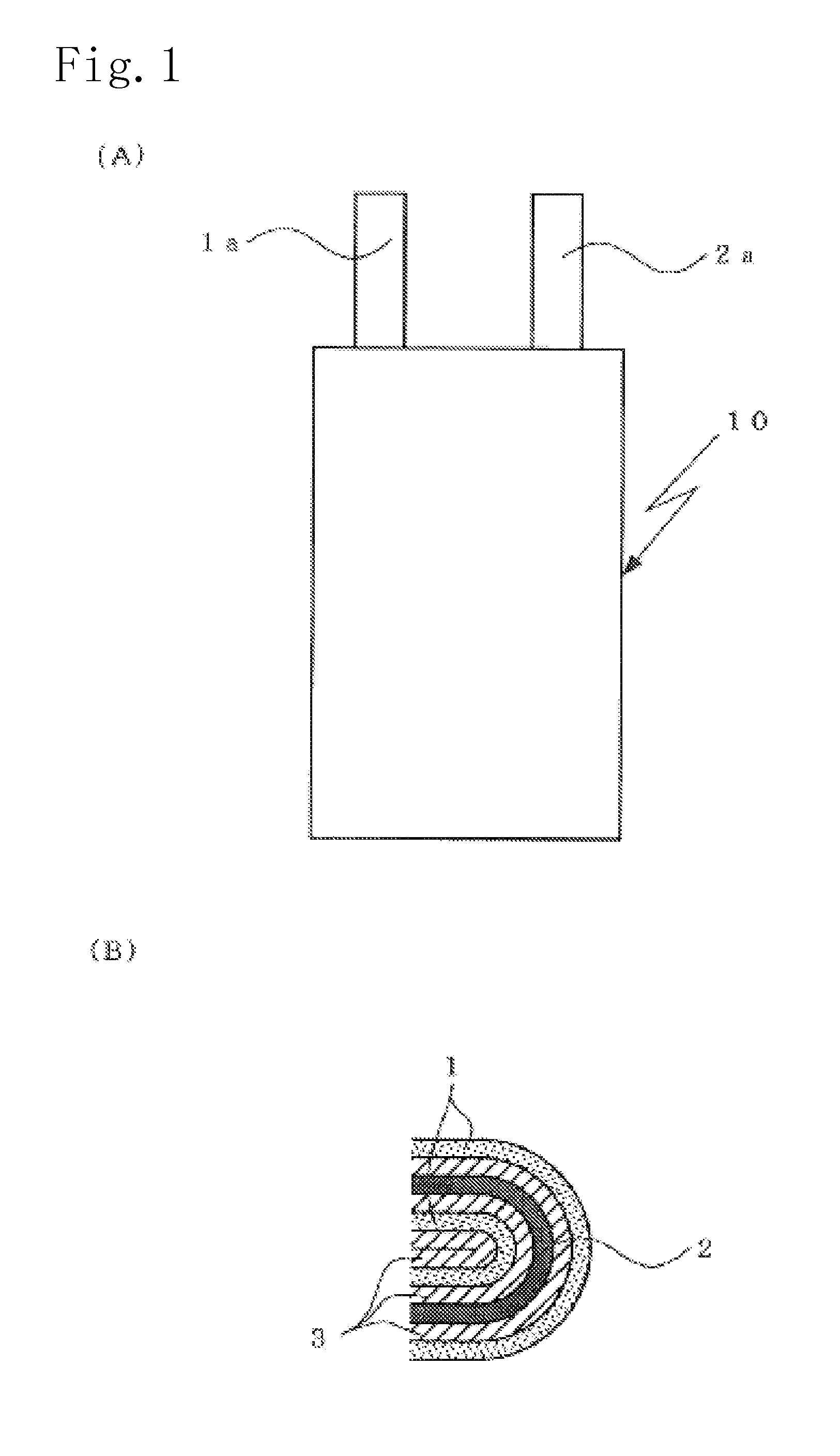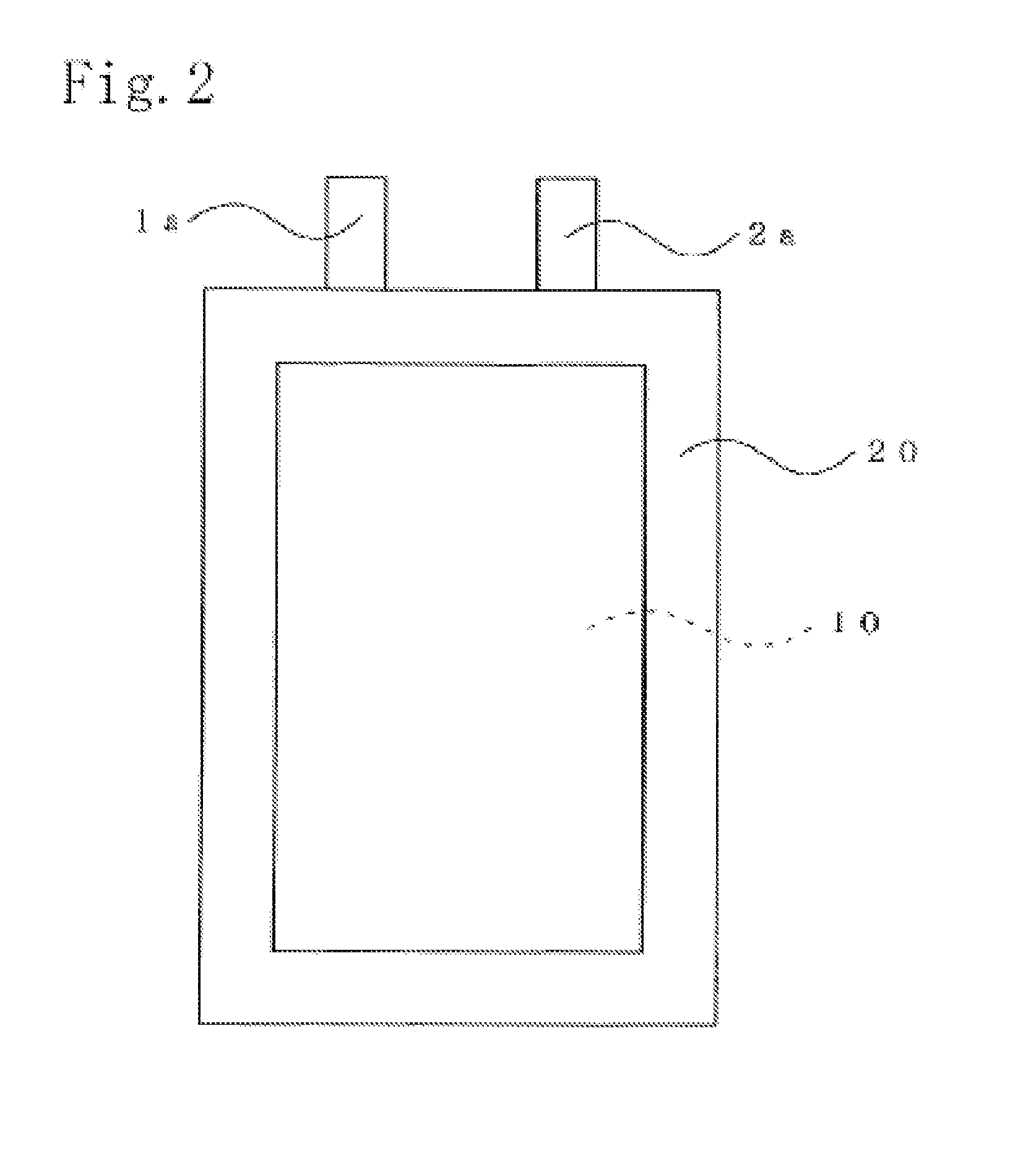Non-aqueous electrolyte secondary battery
- Summary
- Abstract
- Description
- Claims
- Application Information
AI Technical Summary
Benefits of technology
Problems solved by technology
Method used
Image
Examples
example 1
Fabrication of Battery
[0034]In Example 1, a positive electrode was prepared as follows. A positive electrode active material wherein zirconium was adhered to the surface of Lithium-cobalt oxide represented by LiCoO2 having an average particle diameter of 13 μm and a BET specific surface area of 0.35 m2 / g was prepared. Next, this positive electrode active material, carbon material powder as a conductive agent, and polyvinylidene fluoride as a binding agent were mixed in amass ratio of 95:2.5:2.5. Then, the resultant mixture was kneaded with N-methyl-2-pyrrolidone solution to give positive electrode composite slurry.
[0035]As a positive electrode current collector, an aluminum foil having 15 μm thickness, 402 mm length, and 50 mm width was used. The positive electrode composite slurry was applied on one side of the positive electrode current collector. Here, the length and width of the positive electrode composite slurry applied on the one side of the positive electrode current collect...
example 2
[0047]In Example 2, in preparation of the non-aqueous electrolyte of Example 1, the amount of 1,6-diisocyanate hexane (diisocyanate A) of the straight chained diisocyanate compound added to the non-aqueous electrolyte was changed to 2 mass %. Except for the above, the same procedure as in Example 1 was used to fabricate a non-aqueous electrolyte secondary battery of Example 2 having a design capacity of 950 mAh.
example 3
[0048]In Example 3, in preparation of the non-aqueous electrolyte of Example 1, the amount of 1,6-diisocyanate hexane (diisocyanate A) of the straight chained diisocyanate compound added to the non-aqueous electrolyte was changed to 5 mass %. Except for the above, the same procedure as in Example 1 was used to fabricate a non-aqueous electrolyte secondary battery of Example 3 having a design capacity of 950 mAh.
PUM
 Login to View More
Login to View More Abstract
Description
Claims
Application Information
 Login to View More
Login to View More - R&D
- Intellectual Property
- Life Sciences
- Materials
- Tech Scout
- Unparalleled Data Quality
- Higher Quality Content
- 60% Fewer Hallucinations
Browse by: Latest US Patents, China's latest patents, Technical Efficacy Thesaurus, Application Domain, Technology Topic, Popular Technical Reports.
© 2025 PatSnap. All rights reserved.Legal|Privacy policy|Modern Slavery Act Transparency Statement|Sitemap|About US| Contact US: help@patsnap.com



